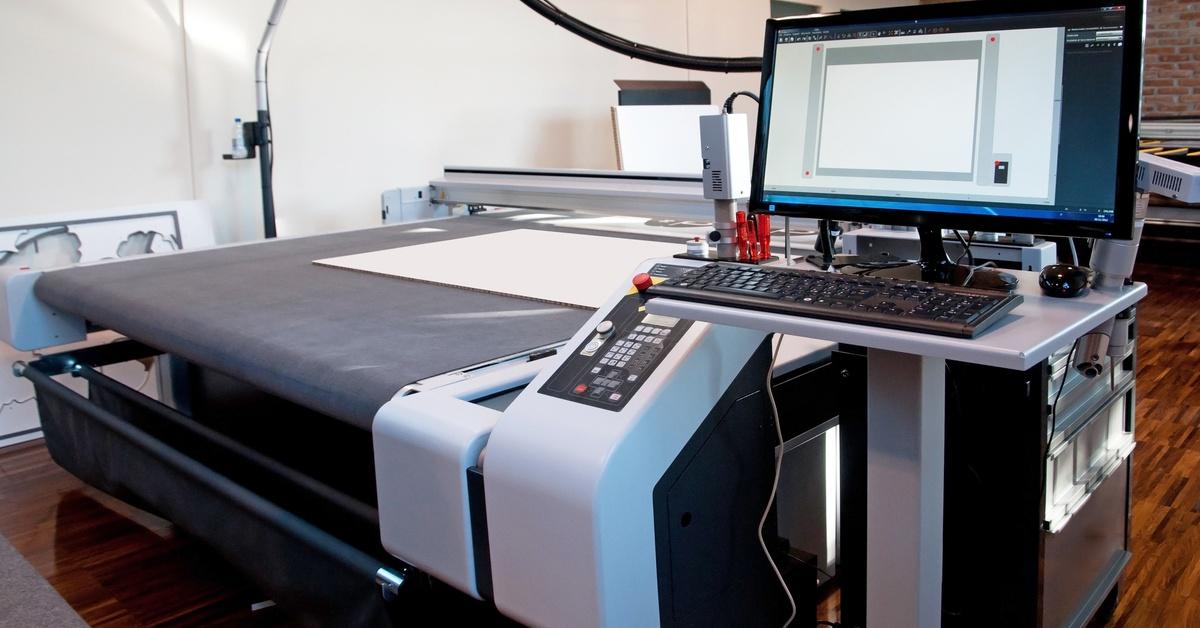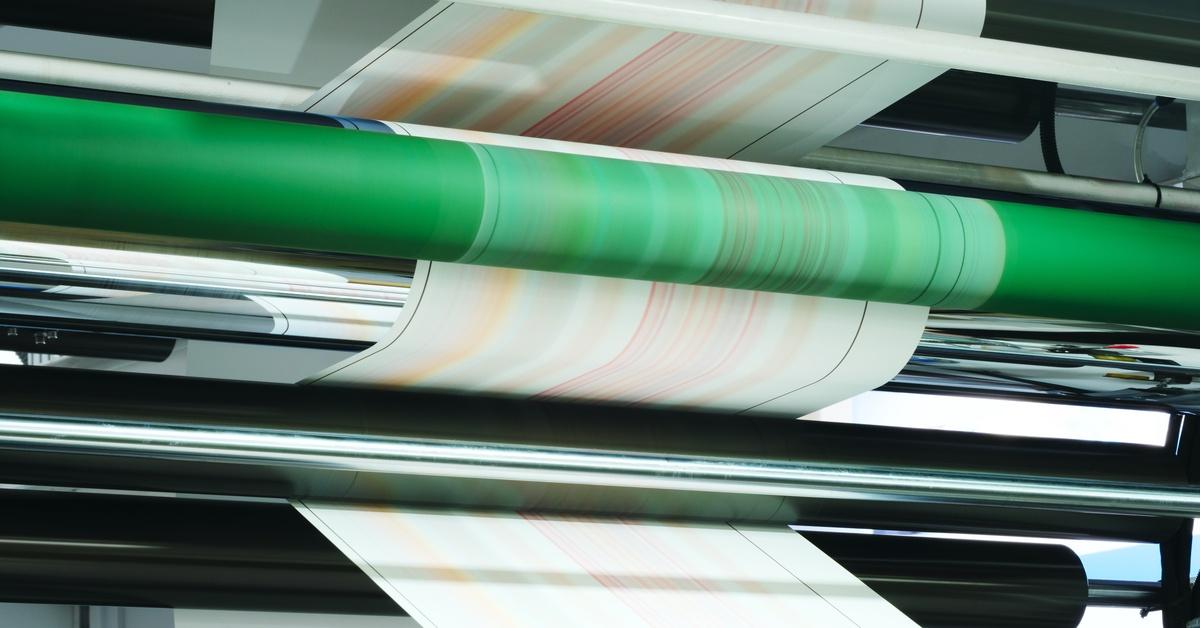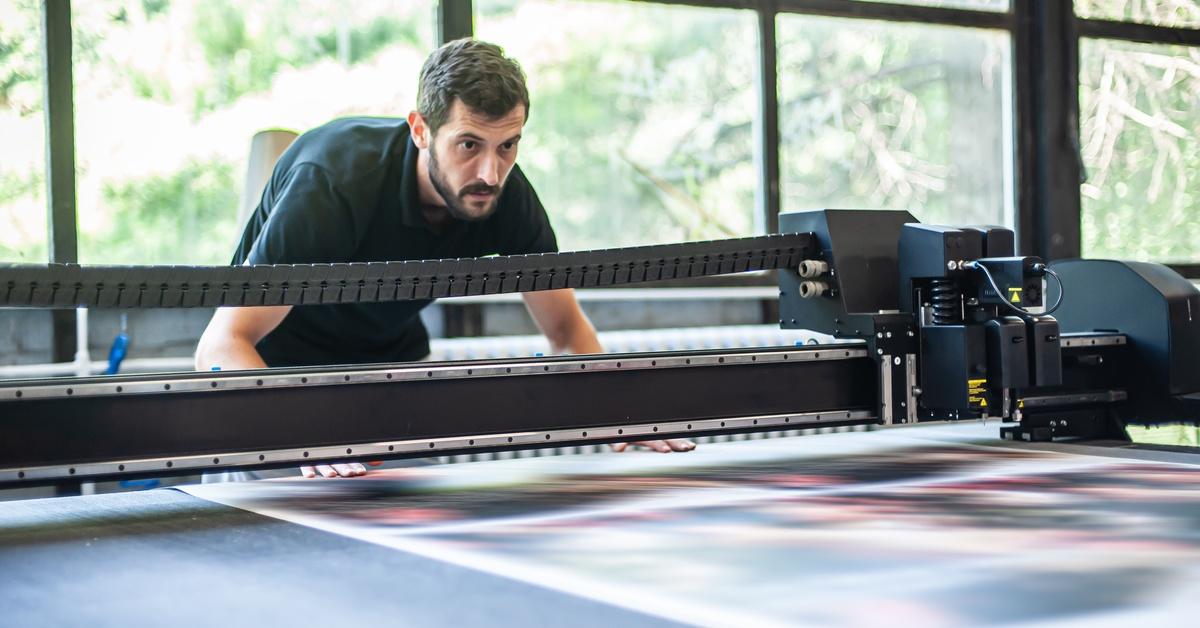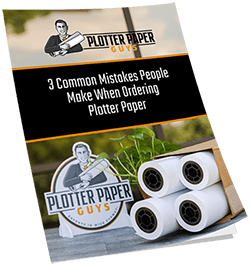Printing technology has come a long way, offering businesses diverse options to meet their specific needs. Flatbed printing and rotary printing are two widely used methods in the printing industry today. Understanding their differences is critical for professionals and business owners to decide which method works best for their projects. Each technique has unique applications, benefits, and limitations that make them suitable for different scenarios.
Here, we’ll break down the key differences between flatbed printing vs. rotary printing. From printing speed to substrate compatibility, by the end of this article, you’ll have valuable insights to guide your printing choices.
What Is Flatbed Printing?

Flatbed printing uses inkjet technology to print designs directly onto a flat surface or substrate. Flatbed printers have a stationary bed where the material lies flat during the entire printing process, enabling precise designs and high-quality output.
This technique is ideal for rigid materials such as wood, glass, metal, and plastic.
What Is Rotary Printing?
Rotary printing operates using cylindrical forms, often referred to as drums or rollers. The substrate moves continuously through these rotating cylinders, transferring images with impressive speed and a smooth flow.
Rotary printing delivers excellent results for long runs or high-volume production.
Materials and Substrate Compatibility
One of the most notable differences between flatbed and rotary printing is the materials these methods can accommodate. Flatbed printing works best for rigid or flat substrates made of acrylic, metal, or foam board. Since the material doesn’t have to move, even irregularly shaped items can be printed on with ease.
Rotary printing is designed for flexible substrates such as fabric, paper, or vinyl. This method continuously rolls materials fed into a cylindrical drum, making it ideal for textiles, wallpaper, and packaging.
Precision and Print Quality
Flatbed printing is highly regarded for its sharpness and detail. Professionals working on intricate designs or high-resolution images favor it because it achieves exceptional accuracy by remaining stationary during printing. For example, businesses can use Canon professional photography printers to achieve precise details and versatility in their projects.
Rotary printing also delivers great quality and excels in uniformity during high-speed production runs. It works well for repetitive patterns on wallpaper or fabric, but it may not match flatbed methods for achieving fine details on rigid surfaces.
Speed of Production

Rotary printing stands out for its efficiency in high-volume jobs. The continuous feed system completes projects with repetitive designs quickly, making it a cost-effective choice for bulk production jobs.
Flatbed printing is more versatile. Its high-resolution printing capabilities are beneficial for signage or fine art. It can handle complex and customized prints, but the manual material placement and setup slow down production, especially for large orders.
Cost Considerations
Flatbed printing often comes with higher upfront costs, mainly due to the advanced machinery and lower production speeds. Since output is customizable, flatbed printing is ideal for smaller, detailed projects that prioritize quality over quantity.
Rotary printing, by contrast, is cost-effective for larger quantities. Its quick setup and high-speed production make it more affordable per unit on bulk orders, even though initial equipment investments are also substantial.
Design Versatility
Designs produced with flatbed printing can be as intricate and varied as desired. The technology works well for layouts with multiple colors, complex details, or unique placements. This makes it perfect for promotional materials and customized products.
Rotary printing is better suited for repeating patterns or repetitive designs. Think of upholstery, wallpaper, or endless rolls of labels where the same image is replicated continuously.
Maintenance and Care
Regular cleaning and maintenance are essential in flatbed printers, particularly for inkjet heads, to ensure consistently high-quality printing. Careful material handling prevents damage to the machine bed. These printers should also be calibrated periodically to maintain accurate print alignment.
Rotary printers are slightly less demanding. Since they are designed for heavy-duty use in high-speed production, maintenance is more focused on keeping the machinery running smoothly over long periods.
It’s important to use manufacturer-recommended cleaning solutions to prevent ink buildup that could clog the print heads.
Environmental Impact
Flatbed printing can be more eco-friendly when printing on demand because it wastes less substrate material. Its ability to print directly onto materials without intermediate processes reduces waste in smaller operations.
Rotary printing, while efficient, produces more material waste during large-scale production startups. This is because it requires solvents or dyes that may have a higher environmental impact.
Printing Industries and Applications
Flatbed printing is widely used in retail, advertising, and design. It’s perfect for creating point-of-sale displays, signage, or any product that requires high-quality and meticulous attention to detail.
Rotary printing is the preferred method for textiles, packaging, and wallpaper due to its ability to produce large quantities with consistent quality. If you’ve seen rolls of fabric with complex patterns, chances are they were created using rotary printers.
Flexibility in Project Scope
If you’re a business owner looking to complete projects requiring constant customization or variety, flatbed printers are a more versatile solution. With the ability to produce everything from one-off designs to small batch customization, flatbed printing is a practical choice for most people’s needs.
However, if your operations focus on large-scale, repetitive tasks—including putting out mass packaging or printing yardage for the fashion industry—rotary printers are your best bet for handling low variation designs efficiently.
Final Thoughts
Choosing between flatbed printing and rotary printing depends largely on the specific needs and scope of your projects. If fine detail, customization, and rigid materials are part of your everyday operations, flatbed printing will be the better choice. For high-speed, high-volume tasks on flexible substrates, rotary printing is the clear winner.
Understanding the key differences between flatbed printing vs. rotary printing helps align your equipment with your business goals, saving you time and resources in the long run. Plotter Paper Guys can supply the materials needed to support your operation, no matter which printing method you choose.
If you’re ready to invest in quality while maintaining versatility within your printing projects, our Canon professional photography printers can expand your possibilities for flatbed applications.






